In graphs: Country house prices on the rise as the London effect spreads
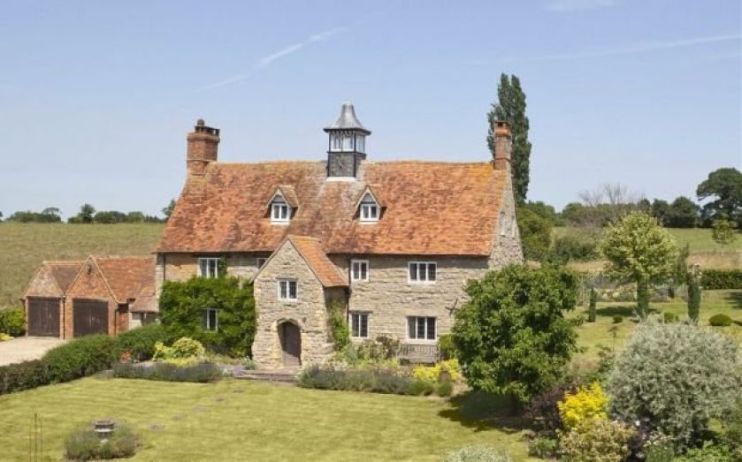
As house prices in London continue to rise, the effect is beginning to spread to properties outside the capital, including country houses.
According to research from Knight Frank, a real estate consultancy company, prime country house prices rose by 1.1 per cent in the last quarter and by 5.2 per cent over the year to June.
Here is a graph showing the quarter-on-quarter increases for the three property types.
The bars represent percentage changes and not prices. Knight Frank used their own valuations as the basis for their report, not sales prices.
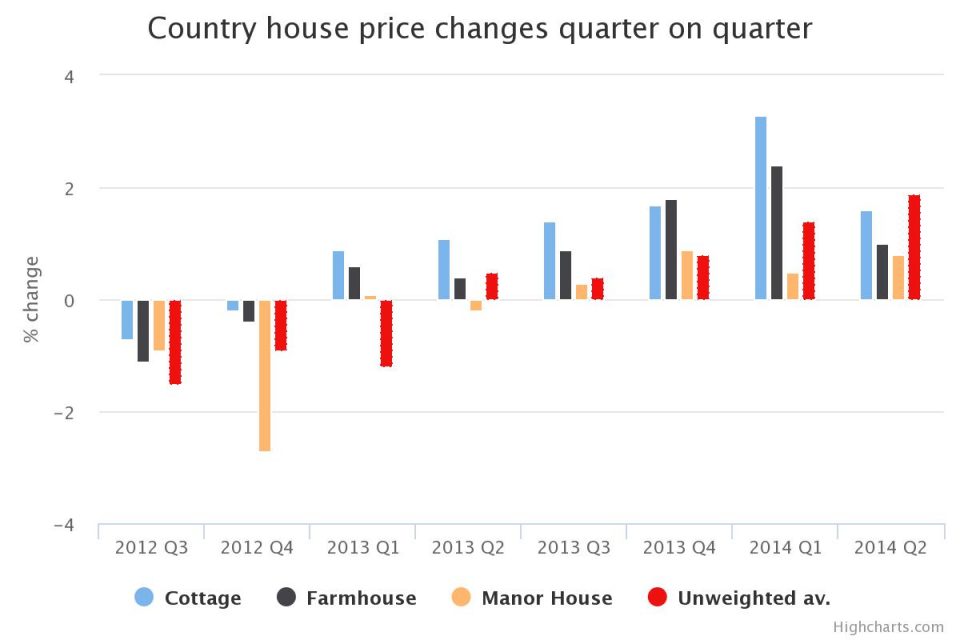
As we can see, the big rise in prices was from the first to second quarter this year, with results showing a return to what might be a (slightly) longer term trend.
And here is a second graph showing how prices have changed from one year to the next.
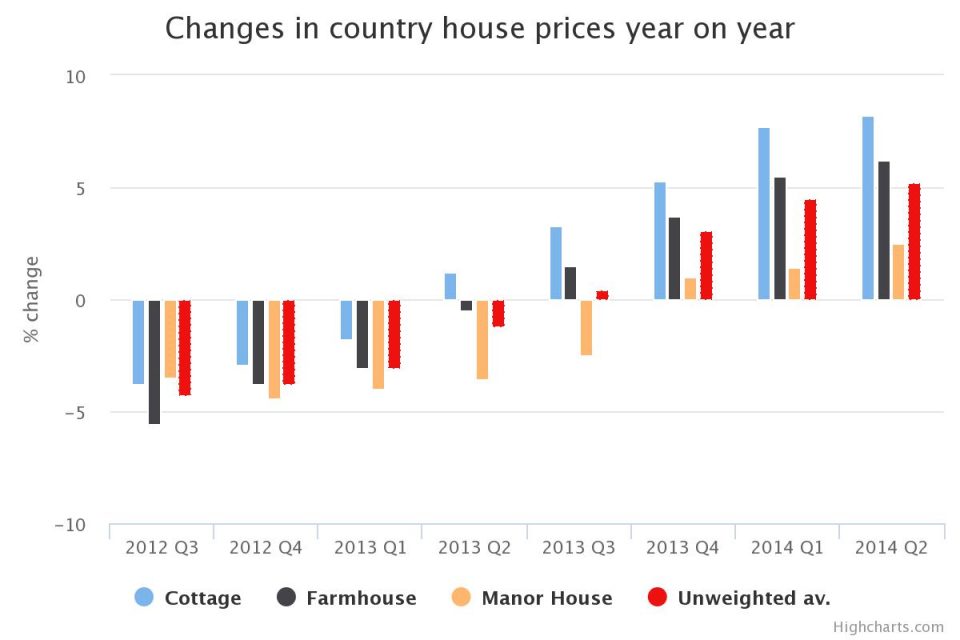
The price rises are no doubt driven by an increase in demand, with the volume of prime country sales up 11 per cent over the corresponding period last year.
Despite continued rises, the prices of country houses remain below the heights they reached in 2007. The Land Registry publishes house price indices showing price increases against a 2007 baseline.
Knight Frank’s research allows us to put the country house price increases into context.
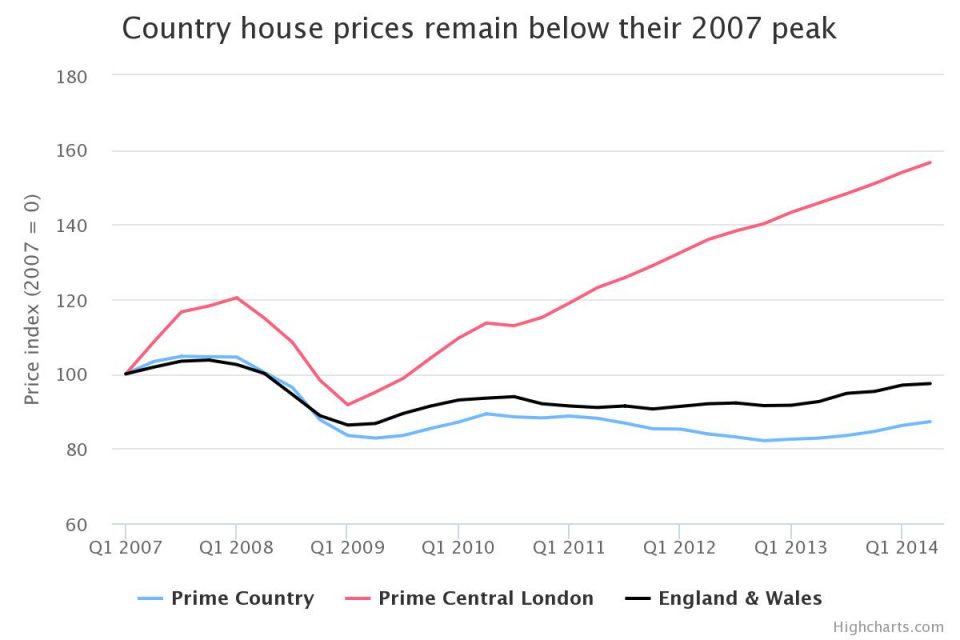
Not all country property is created equal
Manor houses, unsurprisingly, lag behind cottages and farmhouses in terms of price increases, while cottages have seen their prices rise most rapidly.
In fact, Knight Frank found that in general, properties valued at lower prices saw the biggest increases as their sales volume saw the biggest growth.
Country houses selling for under £500,000 saw a price increase of around eight per cent, with the figure dropping to around one per cent for properties valued at over £5m.
The only anomaly was the £4m – £5m bracket which saw a larger increase in value than the £3m to £4m range. The below chart shows year-on-year changes in value for each property type.
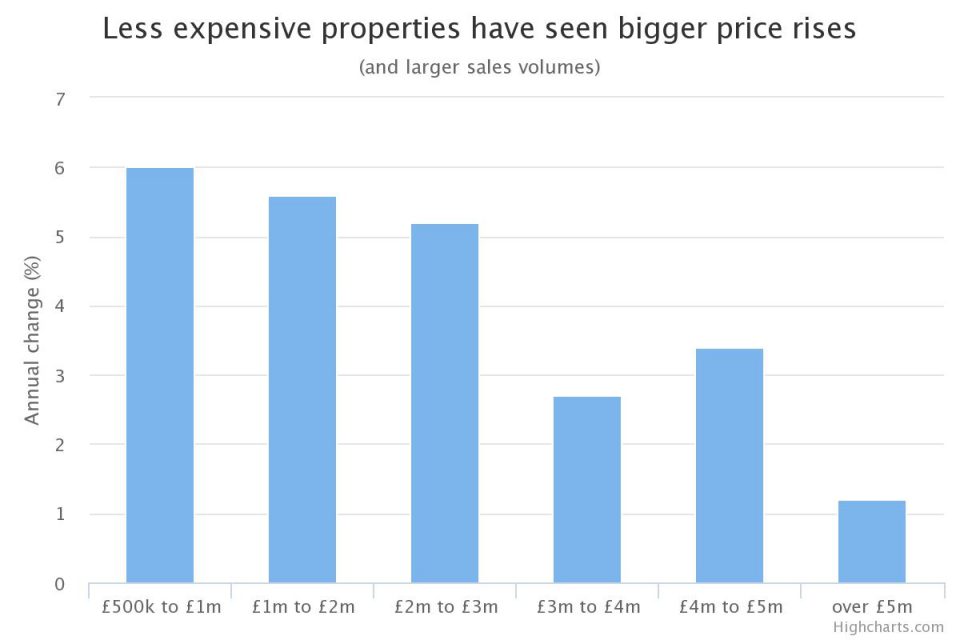
Although country house prices have grown more slowly that England and Wales average, there are already tentative signs that the country house market may be cooling.
The number of people registering an interest in buying a prime country home fell by 2 per cent in the three months to June when compared to the same period last year.